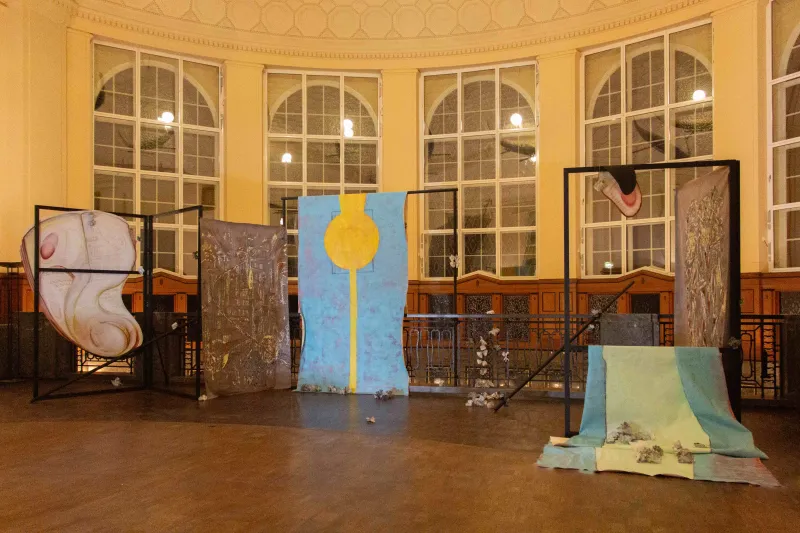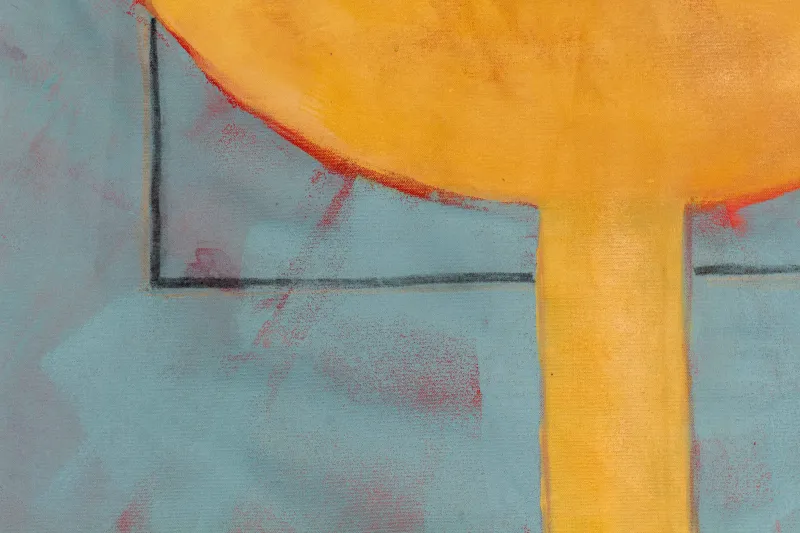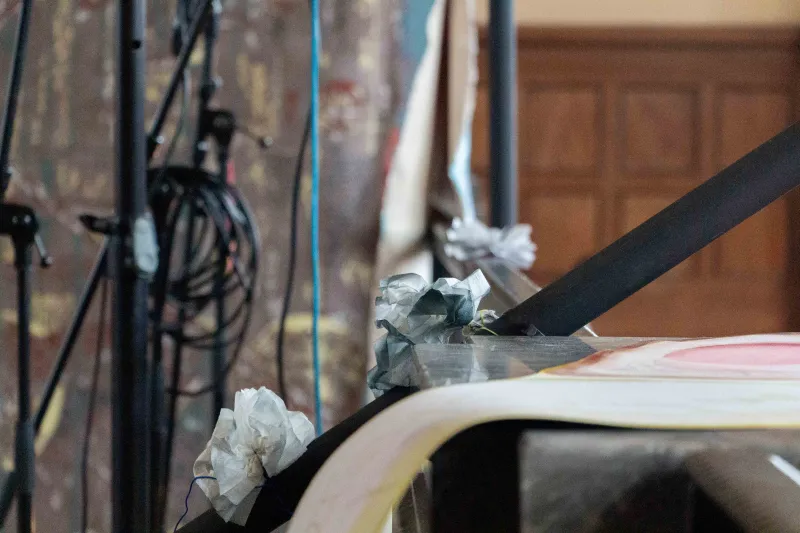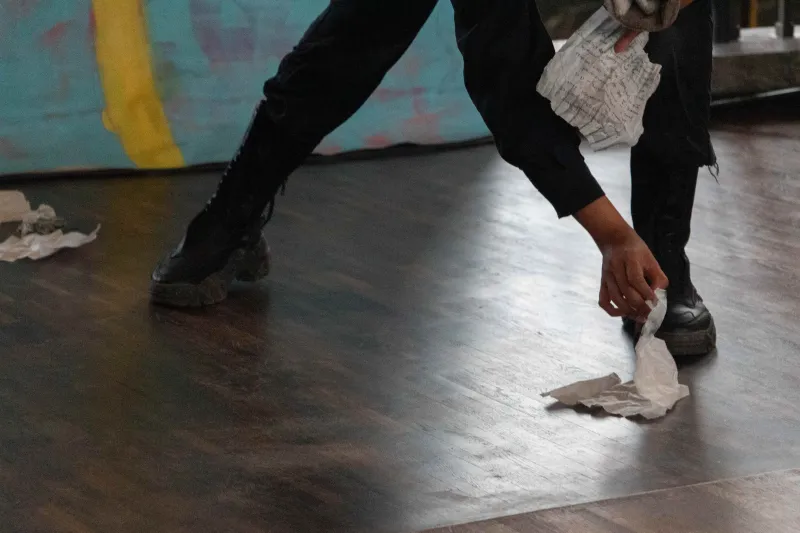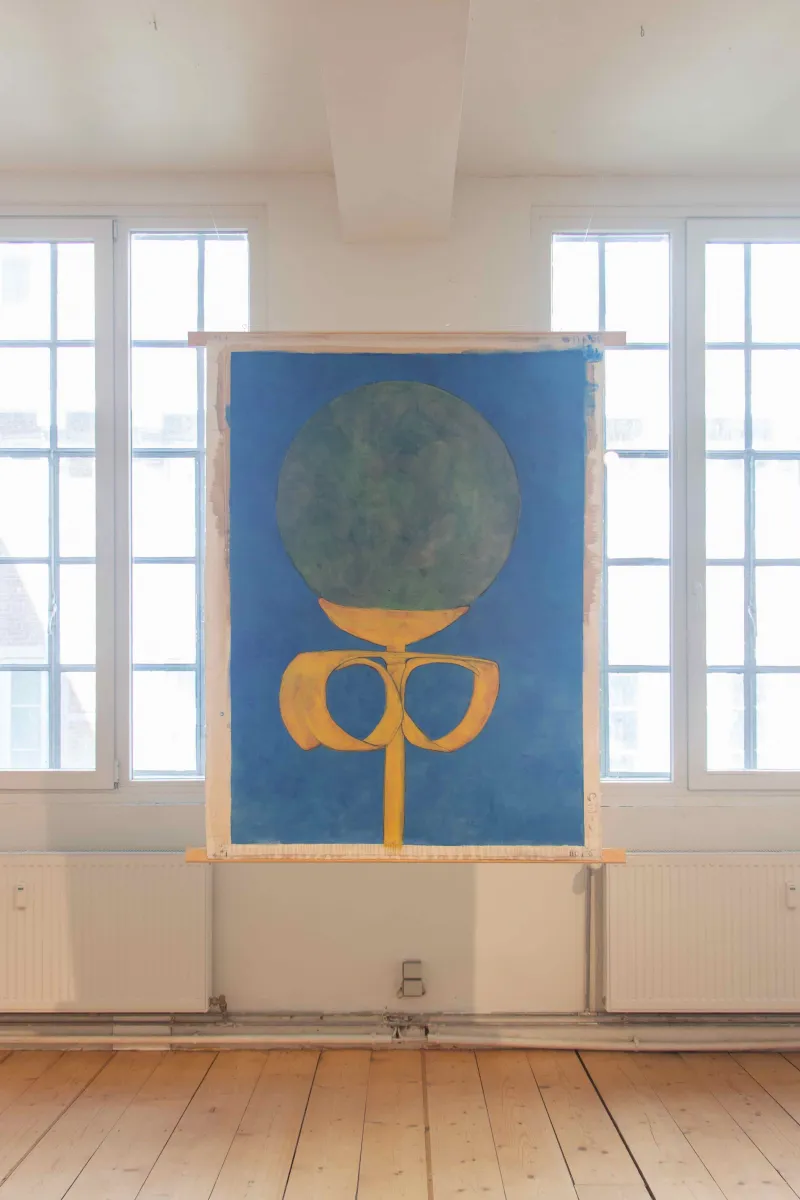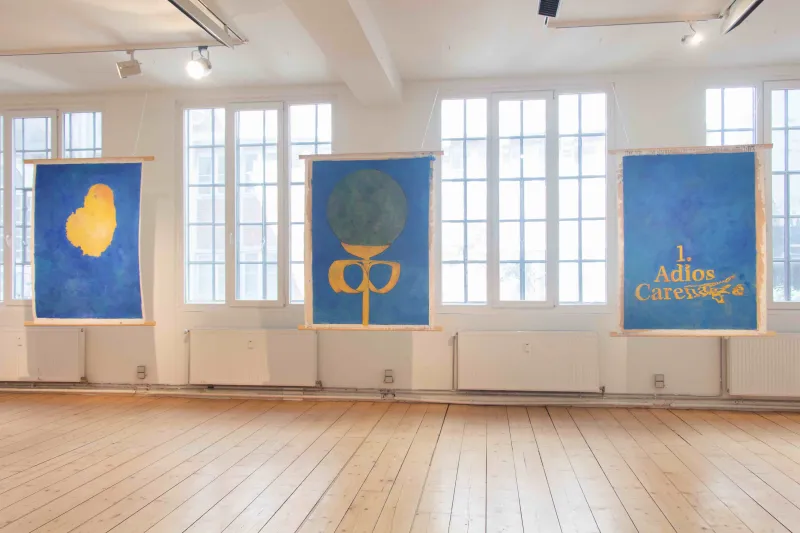Santa Maria Paraffina
Santa Maria Paraffina’s saltwater body is sold by the seashore as the dockside ghost of an island girl, the passport-thirsty tradwife of a naval officer, a black-framed meme and a bus-stop advert. In a sweaty shop she’s overpaid for her bikini and sarong, her bluecuraçao vomit washes out to the surf where she fucks, frolics and is declared dead.
Using this collective alter ego, Felisha Carénage, Luiza Furtado and Anne Meerpohl revel in the absurdly feminine and demonic tropes of womanhood occurring in the seaside spaces into which they were born. Their third iteration of the Maria exhibition finds each of the painters in a typical river-split European city - Hamburg, Vienna, Berlin. For Santa Maria Paraffina: Myth § Trope § Glitch, they are navigating their current continent outwards – back to Florianopolis, Eckernförde and Port of Spain. Playing with regulations that govern painting, performance and textiles, they muddy their own Maria iconography, rudely distorting the mirrors of her surface, rowing ripples into rivulets; sputtering liquid futures.
Invited by the Museum am Rothenbaum to intervene on the theme of Der, Die, Das Tod, which accompanies 2023's Dia de los Muertos festival, Santa Maria Paraffina: Miradores de la Viuda deals with gender (non)specific forms of mourning and death.
As a choreography and construction that plays with the architectural idea of a Widow's Walk, Miradores guides visitors through the border space between ocean and sea, life and non-life.
Using various literary excerpts, Miradores plays with elements of longing, loss and nostalgia to address the real-world emotions that accompany discussions and (in)abilities to act in relation to climate justice, Radical Mourning and other strategies of futurity.
The intervention will be activated through walks/readings led by the 3 Marias, with texts in multiple languages.
Texts include:
Bodies of Water, Astrid Neimanis
To the Lighthouse/ À la Phare/ Zum Leuchtturm, Virginia Woolf
The Sandman, Neil Gaiman
Song of Solomon, Toni Morrison
In The Time of the Butterflies, Julia Alvarez
Recht auf Trauer, Francis Seeck
Queer Abstraction, David Getsy
Ghosts of my Life, Mark Fisher
Von dem Fischer und syner Fru, Philip Otto Runge/ Jakob&Wilhelm Grimm
Created with the support and curation of Weiqi Wang and Gabriel Schimmeroth.

Santa Maria Paraffina, by Felisha Maria Carenage, Luiza Furtado and Anne Meerpohl, is an interdisciplinary project that questions gender roles in maritime global intimacy. The aqueous Maria is a changeable figure who serves as the artistic alter ego of the three painters. In this way, they deal with care-work, friendship, sexual capital and memory.
The Maria Concepcíon triptych was shown at Santa Maria Paraffina, a group exhibition with Anne Meerpohl and Luiza Furtado, which was a part of Cake & Cash’s summer program at MOM, in Hamburg's Gängeviertel. To read about the exhibition, see Katrin Krumm's review at GalleryTalk.Net.
“Adios, Carenage” heralds the opening stanza of Derek Walcott’s epic poem The Schooner Flight. Walcott’s protagonist, Shabine, leaves his mistress, Maria Concepción, to sail up the archipelago. Having left his wife and children as well, he is wracked by guilt and haunted by impotence. The schooner’s deck and the sea’s depths are violent, leave him hallucinating, diving as for pearls and finding only ghosts. Seeking refuge in an island bay, harbour prostitutes’ “spiky cunts” fail him.
Has Maria Concepción’s cunt, for which he has upturned his life, been waxed? Is it overgrown, or not yet matured? Walcott’s – and my – Maria is thornless, smoothed-over and polished by desire. She is slippery, slick with longing – his and her own – and cannot grasp herself. In her hauntings, she is draped in lace, ephemeral, the moon.
